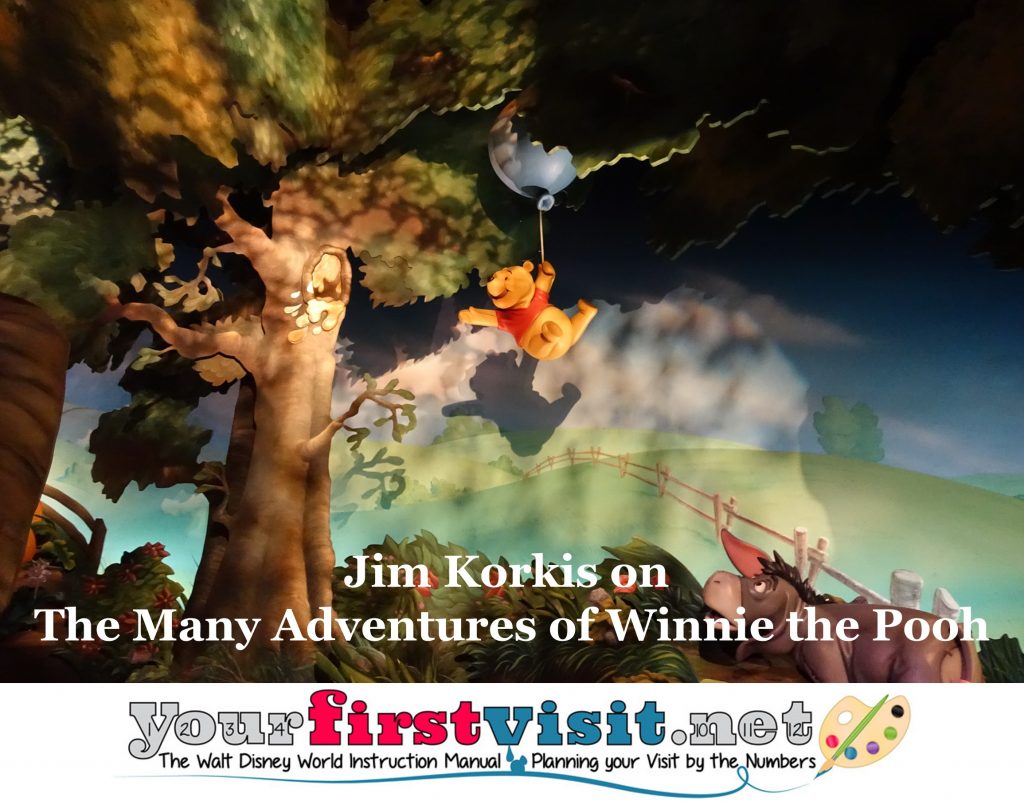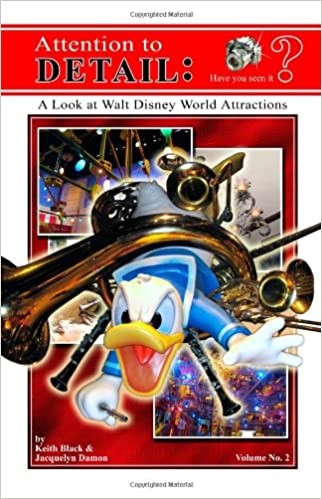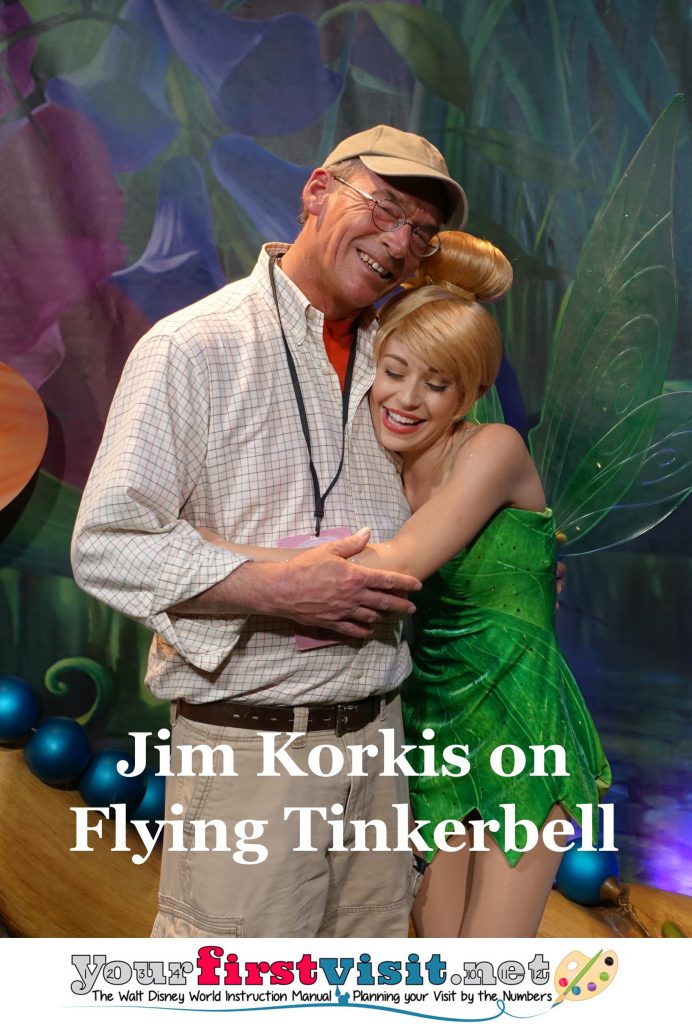Category — A Friday Visit with Jim Korkis
Fridays with Jim Korkis: Claude Coats: Walt Disney’s Imagineer
Welcome back to Fridays with Jim Korkis! Jim, the dean of Disney historians, writes about Walt Disney World history every Friday on yourfirstvisit.net.
YOUR PERSONAL DISNEY LIBRARY (55)
By Jim Korkis
- Claude Coats: Walt Disney’s Imagineer by David Bossert
There are many Imagineers who worked directly with Walt Disney but are little known today. Significant contributions were made by talented people like Bill Martin, Bruce Busman, Fred Joerger and others yet few if any Disney fans would be able to identify anything they did at any Disney theme park.
For over half a century, Claude Coats, who was six feet six inches tall and known at the Disney Studio as the “Gentle Giant,” worked for the Walt Disney Company but perhaps the only thing most Disney fans know about him is he clashed with Marc Davis over the direction of the Haunted Mansion. Coats wanted it more atmospheric and scary while Davis wanted it focused more on characters and humor.
That struggle resulted in compromises that created one of the most iconic attractions at a Disney theme park. That wallpaper with the faces in the attraction is the work of Coats.
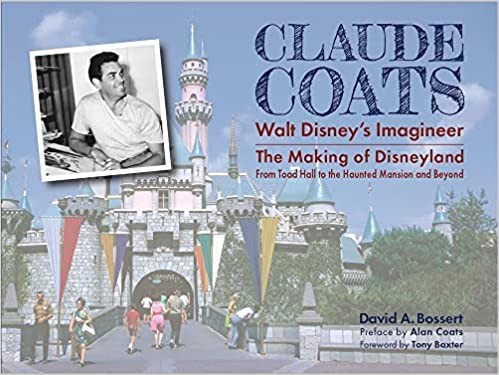
For Walt Disney World, Coats was responsible for design work on Snow White’s Scary Adventures, Mickey Mouse Revue, 20,000 Leagues Under the Sea, If You Had Wings, Universe of Energy, World of Motion, Horizons and many unmade attractions that I have documented in past columns. Coats was also responsible for the exterior design of the Walt Disney World Haunted Mansion.
Claude Coats: Walt Disney’s Imagineer is 264 pages and its 12 by 9 inches size refers to the fact that it is done in a landscape format, wider than it is tall, allowing for a much better display of some photos and artwork.
Readers know that I love Disney books that feature photos and artwork that go beyond the usual standard ones that seem to pop up constantly in books and websites. This book, thanks to the generosity of the Coats family, features things I never knew existed, like a photo of the Pirates of the Caribbean auction scene set up at the Disney Studio that was the final one that Walt himself saw.
On another page is the original colorful map of the Pirates of the Caribbean attraction filled with intricate details done by Sam McKim for a Disney executive. On yet another page is Coats’ sketches for unproduced attractions at Disneyland like one of Walt’s favorite, the Uranium Hunt, where guests would use Geiger counters to search for low grade radioactive rocks.
A few have complained that the book concentrates too much on Coats’ impressive work for Disneyland and the 1964 New York World’s Fair but the book does cover his work painting backgrounds for some of the classic Disney animated feature films like Pinocchio as well as an entire chapter devoted to Coats accompanying Walt Disney to NASA in Huntsville, Alabama in 1965 to meet with Werhner von Braun.
For me, I am grateful to have all of this information in print even if there is not a full chapter devoted to his innovative work on Walt Disney World’s If You Had Wings attraction like the speed tunnel.
Bossert worked for the Walt Disney Company for over thirty years as a an artist and a writer and I am particularly fond of his books on Oswald the Lucky Rabbit and the story behind Destino with Walt and Salvador Dali. For this book he worked closed with Alan Coats, Claude’s son and also an Imagineer. His text is clear, accurate and informative.
Bossert struggled to get Claude Coats: Walt Disney’s Imagineer published because publishers responded, “No one knows Coats so they won’t buy the book.” Here is your chance to prove them wrong.
* * * * *
Thanks, Jim! And come back next Friday for more from Jim Korkis!
In the meantime, check out his books, including his latest, Final Secret Stories of Walt Disney World and Disneyland Historical Highlights!
Follow yourfirstvisit.net on Facebook or Twitter or Pinterest!!
August 26, 2022 No Comments
Fridays with Jim Korkis: David Copperfield’s Magic Underground
Welcome back to Fridays with Jim Korkis! Jim, the dean of Disney historians, writes about Walt Disney World history every Friday on yourfirstvisit.net.
DAVID COPPERFIELD’S MAGIC UNDERGROUND AT WALT DISNEY WORLD
By Jim Korkis
In 1996, it was announced that in summer 1998 Walt Disney World guests would be able to enjoy a unique new dining experience at the then Disney MGM Studios (now Disney’s Hollywood Studios): David Copperfield’s Magic Underground.
David Copperfield’s Magic Underground was officially by CEO Michael Eisner, who explained the magic-themed restaurant would offer “grand illusions performed as guests dine on American and international fare”. Copperfield later explained that the menu would include steaks and pizza he enjoyed on his world travels.
Eisner continued, “As Walt Disney Imagineers do at our theme parks, David Copperfield creates magic on a grand scale. We are very pleased to have the master of illusion, David Copperfield, join with us to bring a spectacular new adventure to our guests at Walt Disney World Resort. He will take the concept of dining entertainment to a new dimension.”
The 30,000 square foot restaurant with entrances both inside the park (near Hollywood Boulevard) and outside the park would seat 500 guests “in an atmosphere reflecting the history and mystery of magic and illusion.” Like the later Rainforest Café at Disney’s Animal Kingdom, it was designed so that guests didn’t have to enter the park to visit the restaurant.
“My life has centered on bringing the experience of magic to people around the world,” stated Copperfield. “My challenge has always been to find ways to involve people in an unforgettable magic encounter that they experience directly – to make them part of the magic.
“Michael Eisner and I have talked for years about combining the impact of illusion with the magic of Disney. Magic Underground will accomplish our goal.”
The first Copperfield Underground restaurant was under construction at that time in New York’s Times Square with additional restaurants planned for London, Frankfurt, Sydney and Chicago.
Copperfield was well known and hugely popular in the 1980s and 1990s and he felt the need to branch out into other venues. Copperfield had often cited Walt Disney as one of his role models growing up.
A billboard was erected outside of Disney MGM Studios just to the right of the entrance announcing the coming restaurant. The restaurant would be decorated with artifacts from Copperfield’s personal magic collection as well as items from magicians past and present.
In house magicians would entertain the diners at their tables and there would be a big main stage for larger illusions. Supposedly guests were meant to feel as if they were in Copperfield’s secret workshop and had entered through a secret entrance.
Concept artwork was displayed in an issue of Magic magazine showing an elaborate interior that would have included levitating dining tables and diners temporarily disappearing, perhaps through the Pepper’s Ghost illusion.
It was described as a multi-story building like a Rubik’s Cube with a small footprint and densely layered levels jig-jogging through vertical space. It would have included a replica of the torch from the Statue of Liberty, based on one of Copperfield’s most famous illusions of having the statue disappear.
The location would feature “D.A.V.I.D” (Digital Audio-Video Interface Device) to remotely interact with the guests in the restaurant. It was basically a high tech videophone system that would feature Copperfield’s face and hands.
It was even planned to build a second location at Downtown Disney near the AMC theaters.
Unfortunately, the New York site ran into conflicts by 1997 between with creative team and the financial investors as costs soared over budget. In addition, Copperfield was a perfectionist, demanding constant changes so the illusions could be clearly seen by anyone from any angle. The project went bankrupt by 1998, losing its investors over thirty million dollars.
When that happened Disney decided to cancel its agreement with Copperfield and quietly removed the billboard with no announcement. While Copperfield continued performing, his star started to fade as he no longer did television specials.
* * * * *
Thanks, Jim! And come back next Friday for more from Jim Korkis!
In the meantime, check out his books, including his latest, Final Secret Stories of Walt Disney World and Disneyland Historical Highlights!
Follow yourfirstvisit.net on Facebook or Twitter or Pinterest!!
August 19, 2022 No Comments
Fridays with Jim Korkis: The Many Adventures of Winnie the Pooh
Welcome back to Fridays with Jim Korkis! Jim, the dean of Disney historians, writes about Walt Disney World history every Friday on yourfirstvisit.net.
THE MANY ADVENTURES OF WINNIE THE POOH IN MAGIC KINGDOM
By Jim Korkis
The Many Adventures of Winnie the Pooh is a sweet and gentle dark ride in Magic Kingdom’s Fantasyland based upon the 1977 Disney film of the same name inspired by the A.A. Milne books about a silly old bear named Pooh and his friends. It opened June 4, 1999 in the same ride building that formerly housed Mr. Toad’s Wild Ride.
Owl’s home includes a picture on the wall of J. Thaddeus Toad handing a deed over to Owl, and on the floor to the right is a picture of Pooh greeting Mr. Toad’s friend, Moley. Imagineers placed these pictures as a tribute to the former attraction.
Imagineer Robert Coltrin, concept designer and co-art director of the attraction, said “Imagineering had been wanting to do this for a long time. With Pooh now more popular than ever, the timing couldn’t be better.”
Imagineer Lori Coltrin, Robert’s sister who was a production designer and co-art director of the attraction, said, “We wanted to bring the warm and friendly feeling of the original films to life.”
Disney Legend Buddy Baker, who wrote the original film orchestrations, also arranged the music for the attraction. Paul Winchell, the original voice of Tigger, recorded the voice of the character for the attraction encouraging even the ride vehicle to bounce along through the story. This was Winchell’s last performance as Tigger before he retired in 1999.
Disney Legend Richard Sherman, who with his brother Robert composed the music for the Pooh films, plays the kazoo in the “Heffalumps and Woozles” scene. Jim Cummings provides the voice for Pooh, as he does in the more recent films since the passing of original voice Sterling Holloway, and Tress MacNeille does the voice for Kanga.
One of the major construction changes from the original Mr. Toad ride was the height of the walls, which more than doubled from the previous attraction. This was done to create better acoustics and prevent sound from spilling over between scenes.
Another significant change was to the track layout, so that the scenes in the new attraction were larger and took longer to experience. This was done so that guests got to hear more of the classic songs such as The Wonderful Thing About Tiggers as they journeyed through scenes from the films in the motion enhanced honey pot Omnimover ride vehicles.
The attraction pre-boarding area features giant pages from a storybook, an idea inspired from the original films where the pages served as a transition to different story segments. The intent was that guests got “lost” in the pages and became part of the story.
The story includes a blustery day in the 100 Acre Woods, bouncing along with an enthusiastic Tigger, a dream encounter with Heffalumps and Woozles (utilizing the Pepper’s Ghost illusion), awakening to a torrential rain storm with fiber optic raindrops and then a party for Pooh to celebrate the sun returning.
An interactive queue was installed in 2010 that allows guests to be entertained as they wait in line by playing in Rabbit’s garden, spinning musical flowers, tinkering with toys, and making shapes on a digital “hunny” board. The attraction exits into Hundred Acre Goods, a merchandise shop selling Pooh related merchandise.
* * * * *
Thanks, Jim! And come back next Friday for more from Jim Korkis!
In the meantime, check out his books, including his latest, Final Secret Stories of Walt Disney World and Disneyland Historical Highlights!
Follow yourfirstvisit.net on Facebook or Twitter or Pinterest!!
August 12, 2022 No Comments
Fridays with Jim Korkis: The Spirits of America
Welcome back to Fridays with Jim Korkis! Jim, the dean of Disney historians, writes about Walt Disney World history every Friday on yourfirstvisit.net.
THE SPIRITS OF AMERICA STATUES IN THE AMERICAN ADVENTURE AT EPCOT
By Jim Korkis
The American Adventure pavilion at Epcot was officially dedicated on October 11, 1982, by Disney President Card Walker and top representatives from the original sponsors, American Express and Coca-Cola. Among other reasons for those sponsorships was that Coca-Cola’s primary colors were red and white and American Express was blue.
Many historical experts and sources were consulted to try to be as historically accurate in the pavilion as possible. These sources included Dr. Alan Yarnell (Assistant Vice Chancellor at UCLA), the Library of Congress, the Smithsonian, the photo libraries of the Associated Press and United Press International, as well as many others, to make the presentation as authentic as possible.
In addition to obtaining copies of Franklin Roosevelt’s 1933 inaugural speech, the Imagineers contacted the Library of Congress for a copy of FDR’s unusual Presidential seal to duplicate for his podium. Other information needed for that Great Depression scene was what type of radio and microphones were used at that time, and the price of gasoline among many other details.
To duplicate the advertisements of that era, vintage architectural magazines were searched to include old-time ads for Coca-Cola (a company that began in 1886) and American Express (a company that began in 1891).
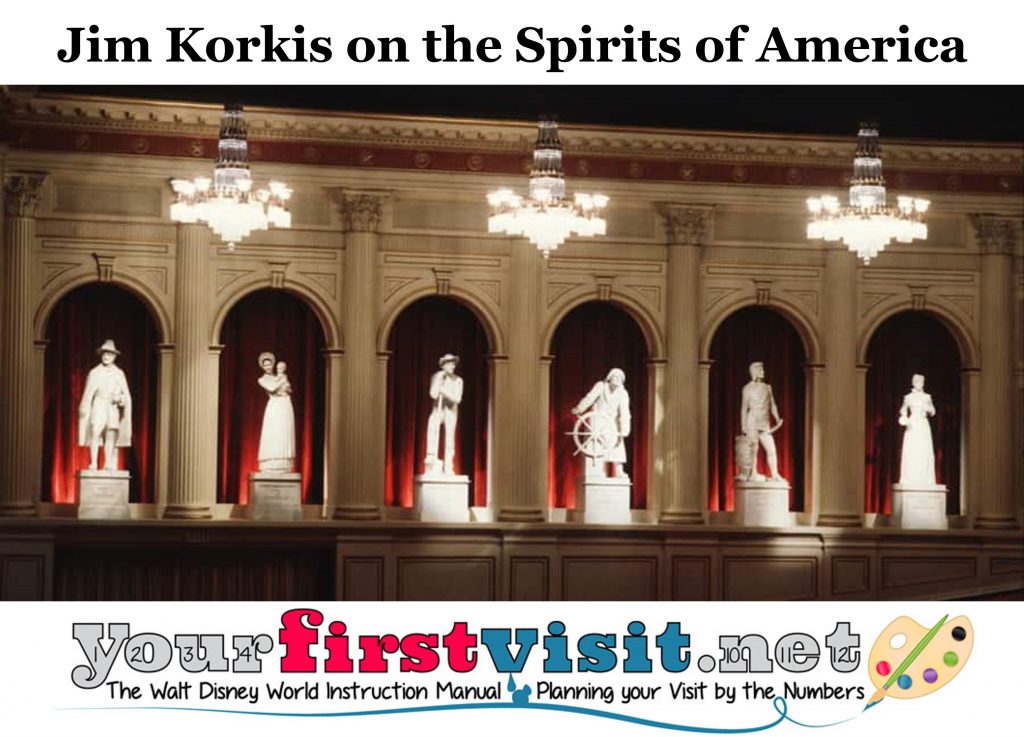
Image (c) Disney
In the theater are twelve Spirits of America statues, six on each side of the room. They were not intended to exactly represent specific people but be suggestive of the attitudes and characteristics of people who helped build this nation.
These statues range in height from five feet five inches to more than six feet. Each sits atop a three foot square base. However, obviously physical references were needed as well as implying a specific person.
Imagineers and PICO (Project Installation Coordinating Office at Epcot that coordinated the design, development and shipping of all the sets and ride vehicles before the park opened) employees posed in full costume and with props for the statues and photographs of them posing still exist in the Imagineering files. The Walt Disney Company has never released the following information.
Spirit of Adventure – Seaman
- PICO Coordinator Alan Bourgeois
- This statue was inspired by the famous Gloucester Fisherman’s Memorial in Gloucester, Maine which honors all of the sailors from the town that had been lost at sea.
Spirit of Compassion – Doctor
- Imagineering Project Manager Jane Jackson
Spirit of Discovery – Mountain Man
- Show Designer Frank Armitage
Spirit of Freedom – Pilgrim
- Production Coordinator John Novak
Spirit of Heritage – Native American
- Senior Research Analyst Melissa Rhone
- This statue is similar to Native American guide Sacagawea who was pregnant when she helped Lewis and Clark, and the statue has her carrying a child in a cradle board on her back
Spirit of Independence – Colonial Soldier
- Conceptual Artist Gene Johnson
Spirit of Individualism – Cowboy
- Production Coordinator Rich Apodoca
Spirit of Innovation – Scientist
- PICO Coordinator Richard Ford
- This statue looks similar to a statue of George Washington Carver.
Spirit of Knowledge – Teacher
- Unknown Imagineer
Spirit of Pioneering – Aviator
- PICO Coordinator David Todd
- This statue suggests a pose taken by aviator Charles Lindbergh.
Spirit of Self-Reliance – Farmer
- PICO John Payne
- This statue was based on sculptor Blaine Gibson’s father who had been a farmer. Originally the face looked too worn and downtrodden, so Imagineer Marty Sklar asked Gibson to brighten up the figure which he did.
Spirit of Tomorrow – Woman and Child
- PICO Coordinator Carol Mitchell
* * * * *
Thanks, Jim! And come back next Friday for more from Jim Korkis!
In the meantime, check out his books, including his latest, Final Secret Stories of Walt Disney World and Disneyland Historical Highlights!
Follow yourfirstvisit.net on Facebook or Twitter or Pinterest!!
August 7, 2022 No Comments
Fridays with Jim Korkis: Attention to Detail
Welcome back to Fridays with Jim Korkis! Jim, the dean of Disney historians, writes about Walt Disney World history every Friday on yourfirstvisit.net.
YOUR PERSONAL DISNEY LIBRARY (54)
By Jim Korkis
- Attention to Detail: A Look at Walt Disney World Parks by Keith Black
- Attention to Detail: A Look at Walt Disney World Attractions (Volume 2) by Keith Black and Jackie Damon
With today’s technology, it is possible for just about anyone to publish a book and have it remain in print, but without publicity, many of these small volumes often go unnoticed. I am constantly stumbling across these “surprise” books while looking for something else.
Attention to Detail: A Look at Walt Disney World Attractions was self-published in 2010 and was apparently successful enough focusing on the four WDW theme parks that a second volume in the same style and size with more material was released in 2014.
Since these books were published roughly eight and twelve years ago, they feature some images of things that are no longer in the parks (which I consider a bonus) but also do not have images of some of the more recent additions to the parks.
As the book proclaims, “There is always more to discover when you pay attention to detail!” which is a belief I heartily support. One of the things that makes a Disney theme park experience different is the attention to detail that is seamlessly incorporated into everything.
The book is formatted much like a quiz or hunt to encourage visitors to the four WDW theme parks to look a little closer at the details.
It is a small book with only 75 pages but each of those pages usually features three good-sized full color pictures thanks to the photography of Damon. Unlike too many self-published books these photos are clear and have great composition to show the detail with no confusion about what it is. I wish more books had photos this good when discussing details in the parks.
Apparently Damon also contributed to the text but it is clear the majority of that text is by Black who has a background in architecture and engineering. Like many writers, he had no access to the back story or nomenclature of the things he depicts. Like many other writers about Disney, he is simply a typical park visitor with a healthy curiosity and is depending upon what he actually sees.
He and his wife and two daughters took their first trip to Walt Disney World in 2003 and he began to recognize things that others took for granted but that he realized had a greater purpose than mere decoration.
The book goes through three levels: Weenie, Prop and Pixie Dust with each section zooming in a little closer. Besides each photo is an area for the reader to make notations and after each section there are hints about where the image is located in which park. At the end of the book is an Answer section that has two or three sentences for each of the ninety-nine details depicted in the previous pages.
The book has two short scavenger hunts for details designed for a family or group of friends. I found them clever without being frustrating. It is clear that the authors meant all the material to be fun and inspire visitors to pay better attention to what they were seeing.
I found the book charming and it made me smile. It includes several photos that even gave me pause. Obviously, this is not a “must have” book, but I was glad to discover it and its sequel and include them in my research library. It may be a little challenging to get a copy of both books but this first volume was easily obtainable.
* * * * *
Thanks, Jim! And come back next Friday for more from Jim Korkis!
In the meantime, check out his books, including his latest, Final Secret Stories of Walt Disney World and Disneyland Historical Highlights!
Follow yourfirstvisit.net on Facebook or Twitter or Pinterest!!
July 29, 2022 No Comments
Fridays with Jim Korkis: Flying Tinkerbell
Welcome back to Fridays with Jim Korkis! Jim, the dean of Disney historians, writes about Walt Disney World history every Friday on yourfirstvisit.net.
FLYING TINKERBELL IN MAGIC KINGDOM
By Jim Korkis
Tinker Bell was always closely associated with Disneyland because of her appearances on the weekly Disney television show. In the early days, one of the most frequently asked questions by guests at the new theme park was “Where is Tinker Bell?”
In 1958, Walt Disney saw a special concert show of Disney music at the Hollywood Bowl where a live Tinker Bell flew off the top of the amphitheater. He hired the same artist, Tiny Kline, a seventy year old grandmother, to re-create that same experience at Disneyland.
In the summer of 1961, Kline took her first flight off of the Matterhorn to signal the start of the fireworks. The entire trip took approximately thirty seconds. Kline passed away in 1963 from cancer and passed the wand on to a succession of other flying Tinks.
Many things immediately transferred from Disneyland to Walt Disney World when Walt Disney World opened, including the Candlelight Processional. However, it took until a special Fourth of July fireworks show that debuted July 3, 1985 for Tinker Bell to fly in Walt Disney World, from Cinderella Castle to Tomorrowland in front of more than 60,000 guests.
Disney Legend Bob Matheison told me in an interview 2015: “The first girl out in Florida to do Tinker Bell was actually a receptionist during the day and earned extra by flying across the sky at night. I forget her name, but I can remember what she looked like. It was tough to find someone to do that because it doesn’t look as high looking up as it does looking down.”
As part of the audition process, applicants are put in the costume and hauled up a hundred feet in the air by a crane and swung around to see how they can handle the height situation, “fly gracefully” and how well they can maintain a pose.
A Cast Member needs to be small and light enough for the harness and cables to hold, but heavy enough to have the momentum to sail down the cable and not get stuck.
Unlike at Disneyland, at Walt Disney World it is a straight flight from Cinderella Castle to Tomorrowland.
About an hour before the fireworks show Tinker Bell begins putting on her makeup and climbing the stairs and eventually taking a ladder to her place, 189 feet up, inside Cinderella’s Castle. There is room at the top for Tinker Bell and one other Tech person. The door she climbs out of is only four feet tall.
Once the cue is given the tech person literally shoves Tinker Bell out of the window to get enough momentum, and depending on the shove off, and the wind resistance, Tinker Bell can fly anywhere from 20 to 35 miles per hour for the flight.
At the top of the Tomorrowland Terrace there is a gymnast mat up on its side waiting to bring Tinker Bell to a screeching halt. Before she gets to the mat, there are two techs standing on the roof with a type of blanket net spread open to “catch” her.
Tinker Bell is wearing a battery pack in a backpack, to make sure that her wings are fully illuminated, but that isn’t the only thing in the backpack; she also has a rope in case she meets wind resistance or didn’t get a good shove. If that happens, Tink Bell turns off her lights and pulls herself hand over fist the rest of way down the wire to the top of the Tomorrowland Terrace on a metal platform close to Buzz Lightyear/Laugh Floor.
Once there, and out of sight of our guests, she reaches into her backpack and pulls out that rope. She then drops it to the two techs that are standing on the roof, and they pull her the rest of the way to safety.
The techs who catch her have a black bag to put the flight equipment in (which is identical to the bag they went up into the castle with from the launch position) and a moving blanket. They have to grip the moving blanket REALLY hard since she is really moving quickly and then run fast to sort of match her speed and she would literally crash into the blanket they were holding to slow her down.
* * * * *
Thanks, Jim! And come back next Friday for more from Jim Korkis!
In the meantime, check out his books, including his latest, Final Secret Stories of Walt Disney World and Disneyland Historical Highlights!
July 22, 2022 No Comments

